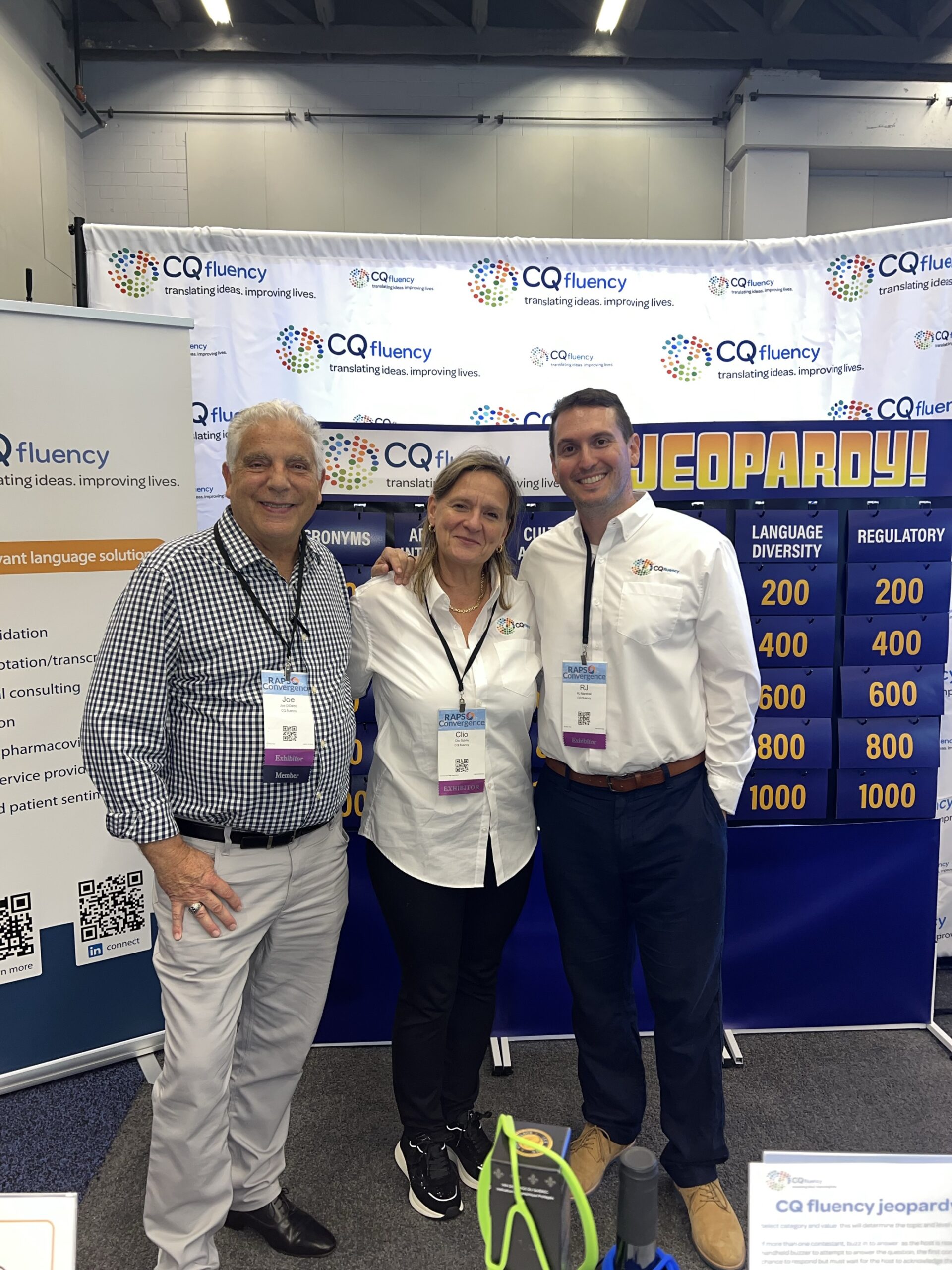key insights from RAPS Convergence 2023 in Montreal
”Disease and illness do not discriminate.” This is how one of the sessions of the RAPS Convergence Conference in Montreal kicked off. In that session, we were once reminded of the fact that diseases don’t discriminate, but that demographics like race, ethnicity, age, gender, and even socio-economic and environmental aspects, play a role in how patients react and possibly yield diverse clinical outcomes and primary endpoints. Failing to do proper due diligence during patient recruitment may result in unreliable outcomes and extremely costly clinical drop-outs.
In social media and industry publications/websites , we read much about the ever-evolving stringent regulatory climate and the additional requirements that this imposes on manufacturers and drug developers. Whether it is about the new FDA guidance on diversity and inclusion in clinical trials, the roll-out of EU-CTR or the new MDR/IVDR, we come to the realization that we will never know it all. New insights continue to be shared that enable us to further deepen our knowledge for the benefit of our clients and of our dedicated staff at CQ fluency.
FDA guidance and legislation push for diversity in clinical trials
The guidance that the FDA issued “Diversity Plans to Improve Enrollment of Participants from Underrepresented Racial and Ethnic Subgroups in Clinical Trials Guidance for Industry” strongly advises industries to provide a Diversity Plan to the agency. In addition, in December 2022, US Congress signed into law FDORA (Food and Drug Omnibus Reform Act) requiring diversity plans for all device and Phase 3 drug studies. It also requires that the FDA start publicly reporting diversity metrics in 2024.
Achieving health equity in clinical trials is a high priority in our industry. However, recruiting diverse populations remain challenging. Lack of access due to location, lack of information in the correct language locale or at the appropriate reading level, and overall distrust being the main reasons. There was a clear absence of discussion on cultures, norms and values that play an instrumental role in how patients experience certain diseases. Cultural taboos and ‘sense of shame’ are to be managed respectfully by building relationships, by listening to patients in underserved communities and by engaging diverse SMEs, so that the industries can not only enhance clinical trial diversity in a sustainable way, but ultimately obtain meaningful data to make informed decisions for the benefit of the patient.
The transition of EMA policy 0070 to the new EU CTR that became effective at the end of January 2022, means increased transparency and scrutiny by the regulatory agencies on manufacturers and sponsors, who need to submit a new Clinical Trial Application (CTA) or a transition plan for an existing trial. Notably, the introduction of leaner medical writing practices is essential for smoother review cycles and reduced need for redaction.


navigating the changing medical device regulatory landscape
The regulatory landscape for medical devices is undergoing a huge and fundamental change in structure, level of expectations and strictness. The EU Commission had granted yet another extension of the transition deadline to 2027 resp. 2028 depending on the device classification, in an effort to enable both manufacturers to get their technical documentation package in order and for notified bodies to get compliant under the new regulation.
During a Notified Bodies (NB) Forum session, all NB stated they currently had availability to assess applications but were not getting enough. One can assume that the reason for such few submissions partly lies with the industry, and may be attributed to incomplete submissions or unorganized and difficult to locate technical documentation.
To support manufacturers in the process, the European Association of Notified Bodies (Team NB) has issued a best practices guide to support manufacturers during the application process. In addition, the Medical Device Coordination Group has issued the MDCG position paper “Transition to the MDR and IVDR – Notified body capacity and availability of medical devices and IVDs” (aka MDCG 2022-14) which addresses 19 different and practical steps to be taken for new device market access or transition of legacy devices.
Firm advice throughout all MDR/IVDR sessions remained that the extension should not be construed as an opportunity to postpone. Start now!
“CQ fluency life sciences in-depth” blog series
In the coming weeks, we will be kicking-off a CQ fluency life sciences in-depth blog series, where we will drill down into some of the current developments and topics in the regulatory space and share some of the viewpoints. We look forward to hearing from you.


explore our life sciences solutions
Visit our dedicated landing page to discover specialized life sciences services tailored for you. Unlock the potential of RAPS Convergence 2023 insights for your industry.
